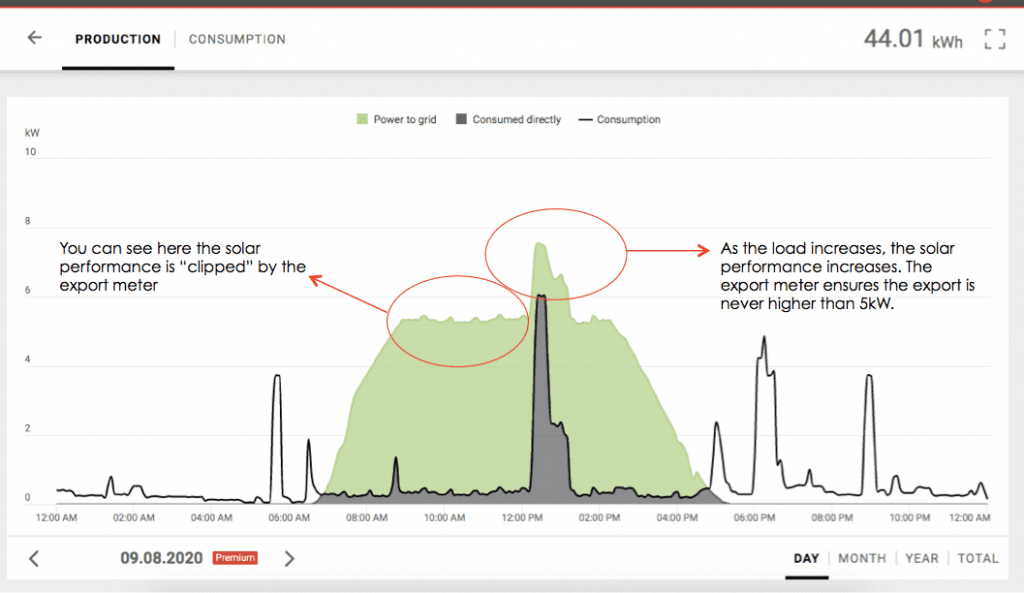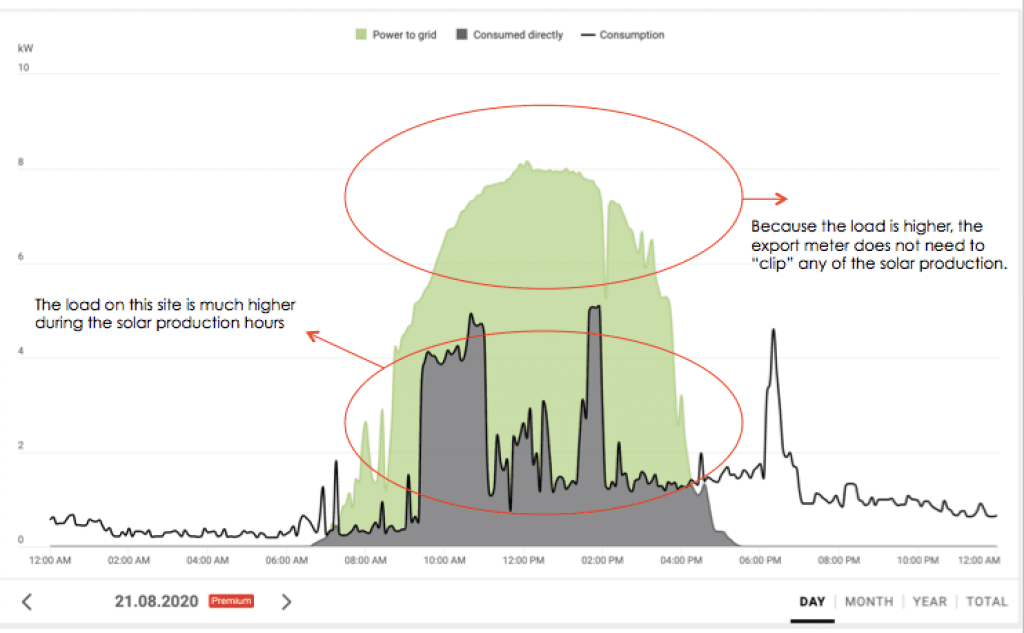What is solar export limiting?
In the last 12-18 months the average system size we are installing has increased. But, is installing more solar panels on your roof always the right thing to do?
In 2018, a 6.6kW system was the most popular system for many reasons. One of the big factors were network limitations on single phase properties: 5kW of inverter capacity used to be the maximum inverter size allowed on single phase properties in most states and you can maximise the inverter by adding on extra panels taking it to 6.6kW. However, more recently, changes have been made to standards and this has increased so you can now install up to 10kW of inverter capacity on single phase properties, with an export limitation of 5kW. This means if you have the right energy profile, you could install up to 13.3kW of solar PV.
What does export limitation mean?
This is the energy distributor making sure no more than 5kW is exported to the grid at any one time. Unless you have a high energy load during daylight hours it could mean your system is too large and will curtail during the day due to the export limitations.
We have an example of this below, the customer has 10.89kW system installed on an 8.2kW Inverter, you can see at times during the day the maximum the system is producing is 5kWh although they have the ability to produce 8.2kWh. There is a short period where the production jumps up and this is because the customer has introduced a small load. What this essentially means to the customer is there system is capable of producing lots more energy, but it is restricted due to network standards and their power consumption not being high enough during solar hours.

As another example, we have a customer with the same size system who has a larger demand, you can see now that the system is producing more power due to the customer using more energy during the daylight hours. Rather than the system limiting (curtailing) at 5kWh you can see that it is reaching 7-8kWh for a period of the day.

Having the ability to install larger systems can be really great for the consumer as long as you are aware of what the limitations are. If you have a high load during the day or if you can switch to running things such as pool pumps or other household appliances you may use during non-daylight hours then the larger systems can pay for themselves really quickly, which make them a really worthwhile investment.
What you don’t want to do is base the investment on a large export with a feed in tariff as realistically you could do the same with a 6.6kW system as a 10.89kW system if you don’t have the power demand there. This could be especially so if you have gas/solar hot water and no one is home during the day to take advantage of the extra energy produced by a larger system, unless you know there might be some usage changes on the horizon.
You may have seen from a few of our other blogs that the conversation around batteries is becoming more and more common. Not having the demand there right now does not mean later on that couldn’t change, as we talk more about batteries then allowing extra energy to charge the batteries is not such a bad thing. This would be a discussion point between the consultant and yourself as again there are lots of factors that come into play here, like do you plan to have more members in the house, is this a place you are keeping for a longer period of time, is it an investment property and many more talking points.
We do not sell “off the shelf” systems at GI Energy, we try to tailor a system based on the customers needs and requirements. During the consultation we will take all of the data from your energy bill and our discussions to make sure we have the perfect system size for you and your family.
What about 3 phase properties?
3 phase sites certainly have more options available for increased export capacity. As a general rule of thumb, 5kW per phase should be OK in most areas for export, although approvals are still required. We can also apply for export for much larger arrays on 3 phase sites, but there are varied requirements and considerations in relation to how much will be granted, and whether a feed in tariff will be available. If you are considering a larger system on a 3 phase site, please get in touch and we can tell you exactly what will be available in your area.
Here are some other links worth checking out:










